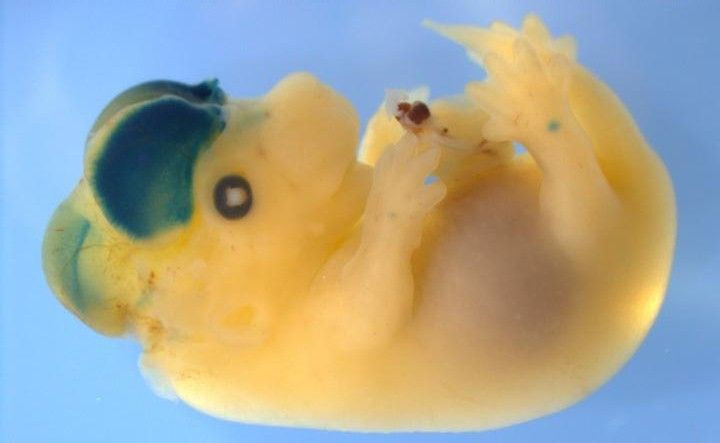Researchers Enlarge Mouse Brains With Bits Of Human DNA

Researchers have managed to dramatically enlarge the brains of mice by inserting bits of human DNA into the rodents. The research, published in the journal Current Biology, is a step toward isolating the genetic element responsible for human intelligence.
Researchers from Duke University isolated a genetic sequence known as HARE5, which is present in two different forms in both chimpanzees and humans, EurekAlert reported Thursday. They introduced both versions of the sequence in two groups of mice.
Every genome contains thousands of short strands of DNA known as "enhancers," which control the activity of genes. The HARE5 sequence, which functions as an enhancer for genes in the cortex region of the brain, was linked to a “reporter” gene that would turn blue whenever these genes were activated. The brains of mice with both versions of HARE5 turned blue, but the brains of mice with human HARE5 turned blue sooner and over a broader expanse.
The brains of these mice were also 12 percent larger than those of the mice with the chimp version of the enhancer. The difference was mostly seen in the neocortex, which is involved in higher-level functions like language and reasoning. Researchers found that HARE5 is likely involved in controlling a gene called Frizzled 8, which plays a critical part in brain development.
"I think we've just scratched the surface, in terms of what we can gain from this sort of study," said Debra Silver, one of the researchers and an assistant professor at Duke University Medical School. "There are some other really compelling candidates that we found that may also lead us to a better understanding of the uniqueness of the human brain."
The Duke researchers plan to study the two groups of mice into adulthood, to see how the differences in brain structure and behavior might manifest. The group will also investigate other HARE enhancers, and the role they play.
"What we found is a piece of the genetic basis for why we have a bigger brain," Gregory Wray, co-author of the study, said. "It really shows in sharp relief just how complicated those changes must have been. This is probably only one piece -- a little piece."
© Copyright IBTimes 2024. All rights reserved.





















